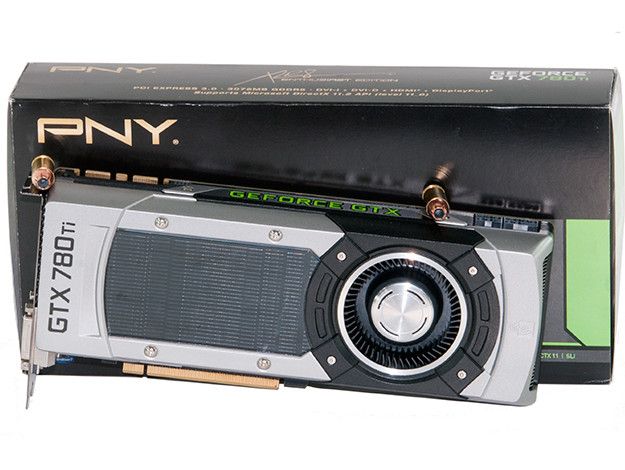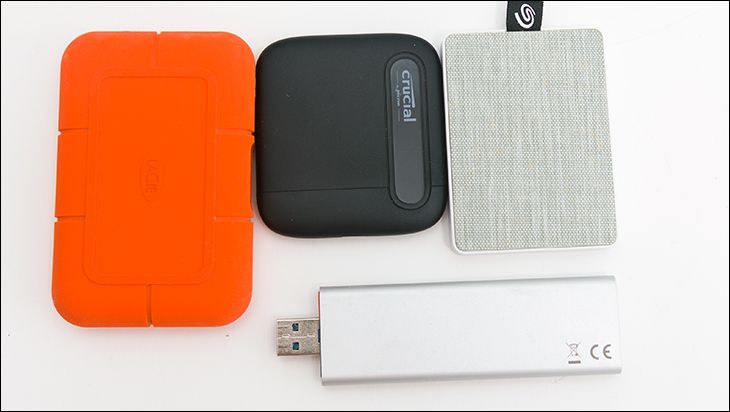The PNY GeForce GTX 780TI XLR8 comes in a very compact and attractive packaging that is both attention getting and filled with all the details any consumer could ask for. Even though PNY has opted for ‘NVIDIA green and black’ color scheme they have greatly improved the overall aesthetics by the strategic use of gold flair.

The only fault anyone can find with this external packaging is that a picture of the actual card is nowhere to be found. The front certainly proclaims – in that highly attractive gold font – that this is a XLR8 Enthusiast Edition video card and the back has plenty of pictures but not one of them is a shot of the card itself. Of course anyone spending nearly $700 will have already done their homework and know what they are buying before they reach the store, but it still is a curious oversight by PNY.

When you remove the internal packaging from the shipping container you can see that PNY has opted for a plastic enclosure. This clear top and white bottomed plastic enclosure both secures the card and further helps reduces the chances of damage to the card happening while in transit. More importantly it doesn’t add much weight or increase the overall dimensions of the shipping container. Something that anyone ordering online will like as it will help keep shipping costs down!

Unfortunately, while there is very little to take issue with the external shipping container the included accessories are a touch sparse. In grand total you will get a single 8pin PCI-e adapter, a single digital to analog port adapter, a quick start guide and a CD with the necessary drivers for the 780Ti XLR8. Considering the more frugal price point of this card this is somewhat acceptable, but more value orientated or not this is nearly a $700 card we would have liked to have seen a much better and varied selection of accessories.

On cursory glance the PNY GeForce GTX 780TI XLR8 looks exactly like a stock GeForce GTX 780 or even a stock GeForce GTX Titan. This is for the simple reason that the PNY GeForce GTX 780Ti XLR8 uses NVIDIA’s reference design. This means the same very good cooler with vapor chamber technology backstopped by aluminum fins, a metal and plastic heatshink shroud to funnel the air out the back of the case, the same 10.5″ PCB, and even the same overall silver and black aesthetics. Truth be told the only way can tell one from another is by reading the model name on the top of the card itself. Interestingly unlike a stock GeForce GTX 780 the ‘GTX 780Ti’ has not been stamped into the metal fascia and rather has been laser engraved. However while it has been cut out, the plastic cover does run underneath this branding so consumers need not worry about hot air leaking inside the case via these large holes.

The rear port of the card is also a dead-ringer for the typical Titan or GTX 780. This means the same connector selection of two DVI connectors stacked above the other and a single full size HDMI and DisplayPort connector. Also like any reference design the rear exhaust ports consist of one row of vents plus two additional vents below the row. This unfortunately does leave a large solid metal area which could have been used for either more connector options or – better yet – more exhaust vents. This will impact overall temperatures, but based on experience with the reference GeForce GTX780’s cooler the PNY GeForce GTX 780TI XLR8 should still provide more than adequate cooling potential.

What does distinguish this GeForce GTX 780TI from a reference stock GeForce GTX 780 cannot be seen from the outside. Even if you remove the heatsink you would not be able to tell the difference and it is only be taking a closer look at the GK110 core that you would have any inkling. Instead of the now standard GTX 780’s GK110 which has 2,304 CUDA cores running at 863/900MHz, the PNY GeForce GTX 780TI XLR8 has all 2,880 cores enabled and running at an base clock of 875MHz and a boost clock speed of 928. This means not only a 25% increase in theatrical performance from the 25% more cores but even more performance from each and every one of those cores. Helping to further improve performance is the 3GB of onboard GDDR5 ram does not run at an effective frequency of 6,000MHZ and instead runs 7,000Mhz.

Even though the GK110 has finally been fully enabled and this card does run it faster than a a GK110 inside a reference GeForce GTX 780, NIVIDA and PNY have been able to keep the power requirements the same at 250 watts. This means only a single 8-pin and single 6-pin PCI-E power connector is needed. Like most reference designs the two power connectors are located along the top edge so as to no make this card even longer and are in the standard side by side configuration. Also like any high performance reference NVIDIA design, the PNY GeForce GTX 780TI XLR8 comes equipped with support for 3-way SLI support via dual SLI connectors.

Speaking of reference designs, PNY has opted forgone the use of a backplate and gone with a naked PCB on for the back. This is unfortunate as the back is what most people will see the most of when this XLR8 is installed inside a case.











